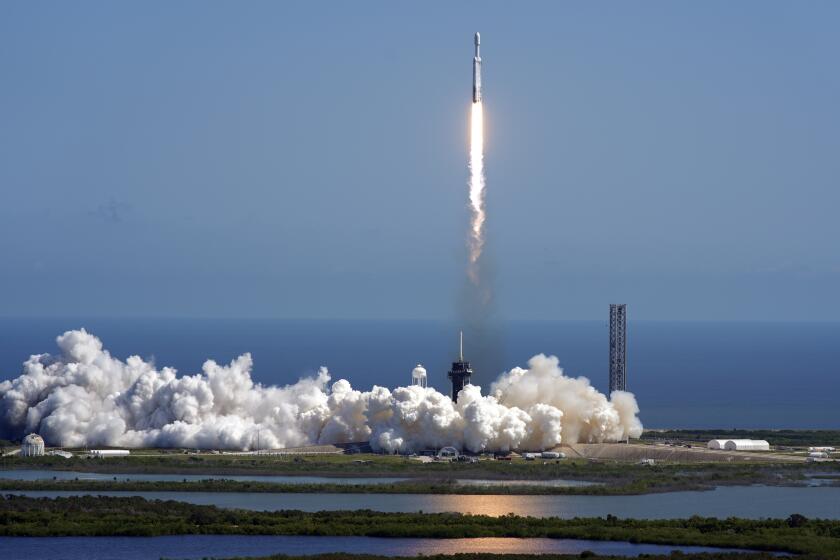Hubble Detects Comet Ring Circling Solar System
The Hubble Space Telescope has detected a previously unseen population of at least 200 million mountain-size comets orbiting in a flattened ring, perhaps 90 billion miles in diameter, that encircles the sun, Earth and the eight other planets.
The astronomers who announced the discovery Wednesday said it confirms decades-old theories about the origins of comets--dazzling objects with fuzzy heads and long tails that sweep periodically through Earth’s field of vision. These objects sometimes collide with other bodies, as Comet Shoemaker-Levy 9 did last year with Jupiter.
Orbiting in the chill outer darkness of the solar system, the vast comet swarm is believed to be debris left over from the swirling cloud of interstellar gas, dust and ice that collapsed to form the sun and planets about 4.5 billion years ago. Scientists believe the ring’s comets represent the only unaltered samples of that primordial building material.
“For the first time, we have a direct handle on the population of comets in this outer region. We know, conclusively, that our solar system doesn’t end at Neptune,” said Anita Cochran of the University of Texas, who announced her team’s findings Wednesday at a meeting of the American Astronomical Society in Pittsburgh. “Knowing where comets come from . . . tells us something new about where we came from.”
Team member Hal Levison, of Southwest Research Institute in Colorado, said: “We believe we are seeing a region of the solar system where the accumulation of planets fizzled out.” In fact, astronomers now consider Pluto, a planet whose eccentric orbit currently puts it closer to the sun than Neptune is, to be the largest inhabitant of the comet ring.
The ring resembles a giant compact disk. Its inner edge--analogous to the spindle hole--begins just beyond the outermost planet more than 3 billion miles from the sun, the team said. No one knows how big the disk is, but theorists place the outer rim at least 500 times farther from the sun than Earth is, or about 47 billion miles out.
The ring studied by Hubble is called the Kuiper Belt, after astronomer Gerard Kuiper, who first suggested its existence in 1951.



